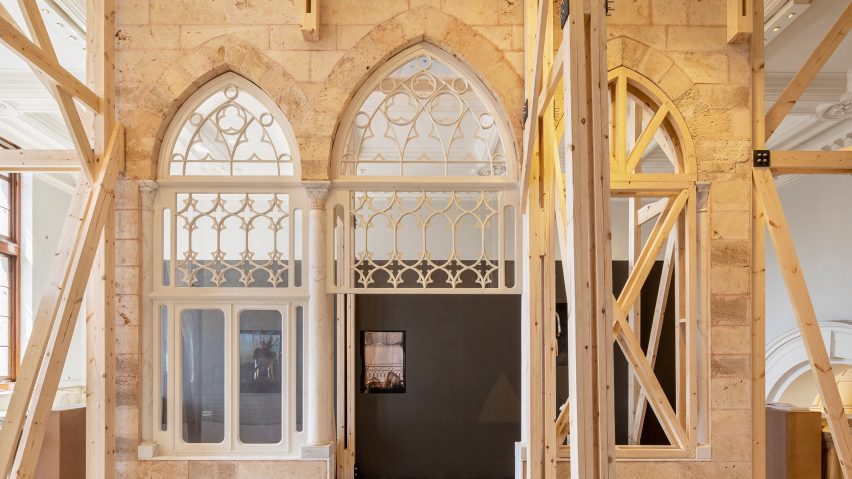
Annabel Karim Kassar reconstructs Beirut house damaged in the 2020 explosion for V&A installation
French-Lebanese architect Annabel Karim Kassar has reconstructed the facade of a traditional Beiruti house at the V&A in London as part of an installation focussing on the 2020 Beirut explosion.
Called The Lebanese House: Saving a Home, Saving a City, the installation's centrepiece is a reconstruction of the facade of Bayt K, a traditional house from Beirut's Gemmayzeh neighbourhood.
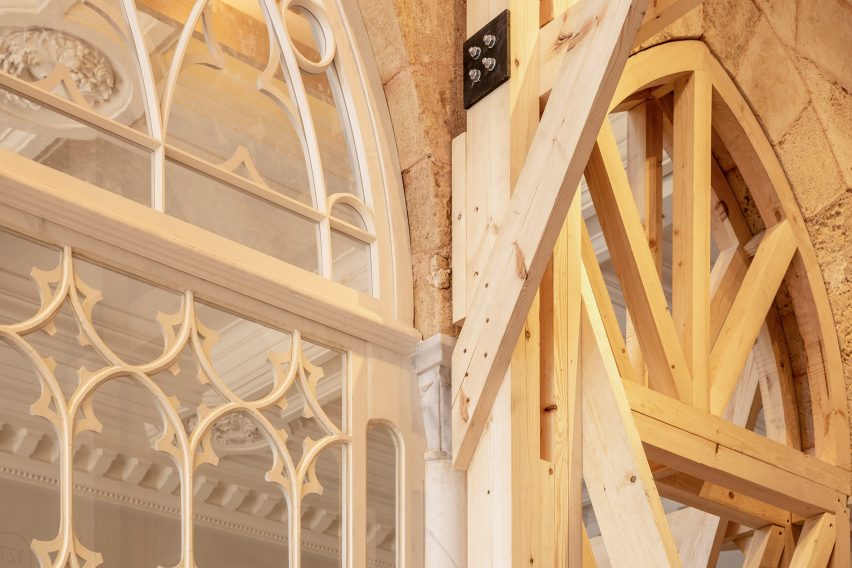
Karim Kassar's architecture studio AKK was already working to restore the 19th-century Bayt K when it was severely damaged in a warehouse explosion in Beirut that devasted a significant area of the city in August 2020.
Its V&A reconstruction of the house is a five-metre-high stone structure with in-built triple arcade arched windows, which are supported by wooden beams that both echo construction in a real house and act as a metaphor for rebuilding, according to Karim Kassar.
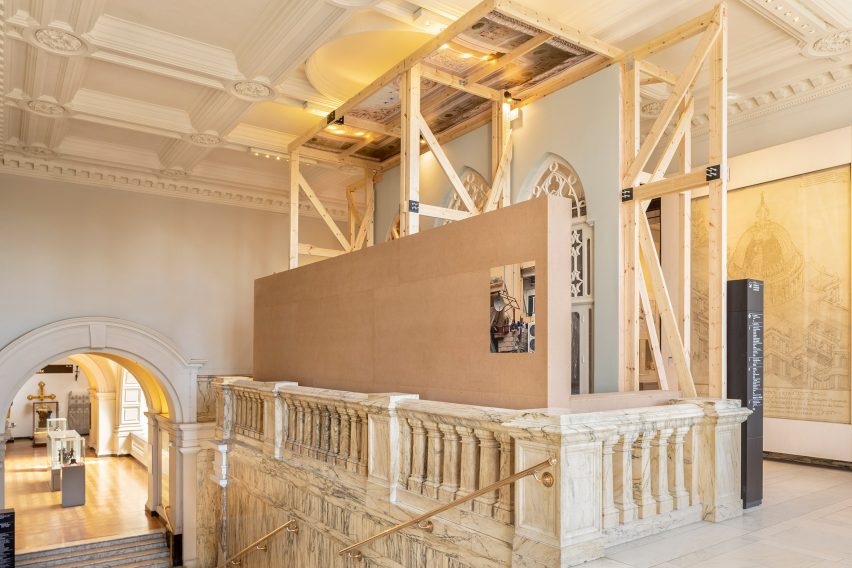
"[The work] is not an interior decoration of a model – it's really a piece of architecture," she told Dezeen. "As an architect, it's part of what I like to do because I'm always building things."
The facade was transported from Lebanon to the UK in pieces, after which it was erected into a lifesize reconstruction at the V&A museum by Beiruti craftsmen.
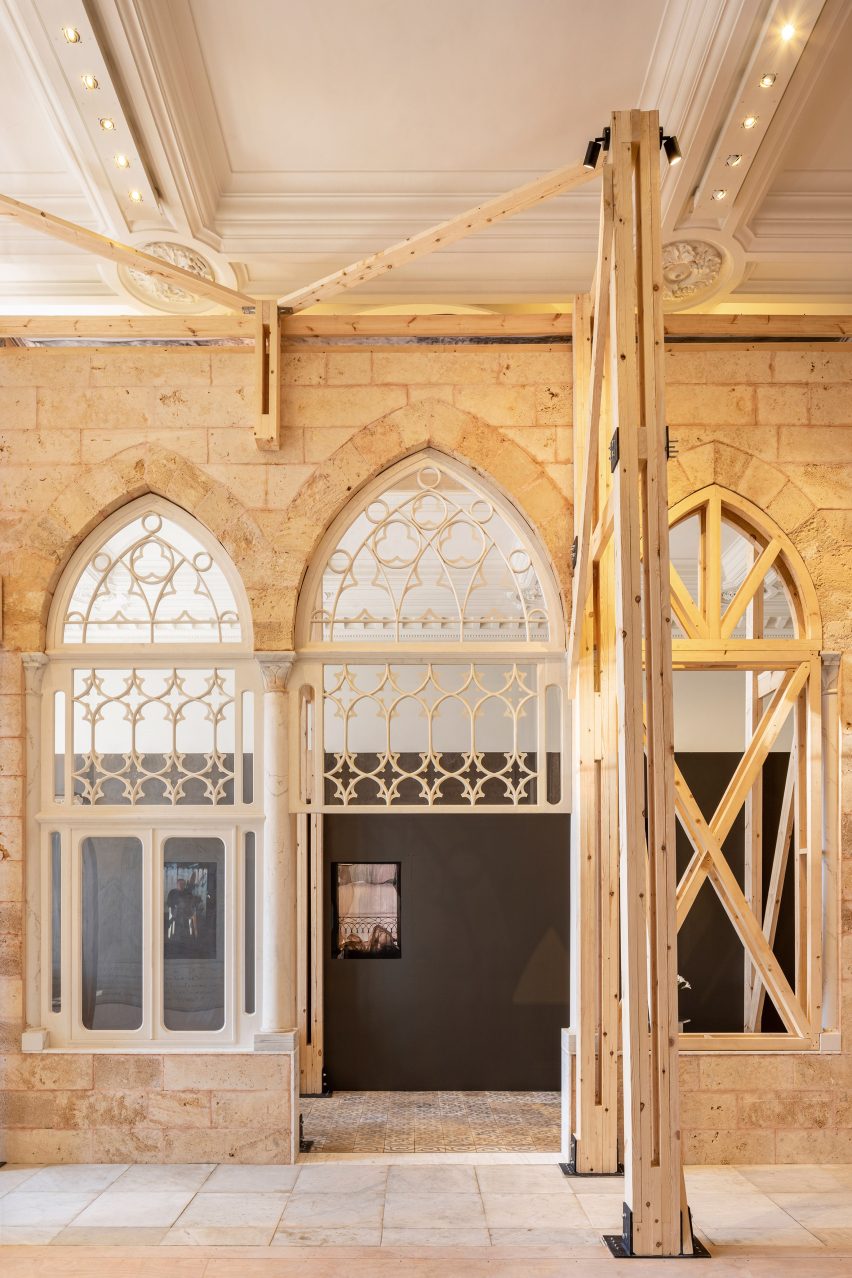
Visitors are invited to enter and touch the facade, which has tiles salvaged from Bayt K underfoot to create flooring, while the reconstructed ceiling features a digitally-printed replica of the real tiles that were damaged in the explosion.
A handful of off-the-cuff, A3-sized images of iPhone street photography taken from or near Bayt K by Karim Kassar are pasted onto a painted grey wall that lines the back of the structure.
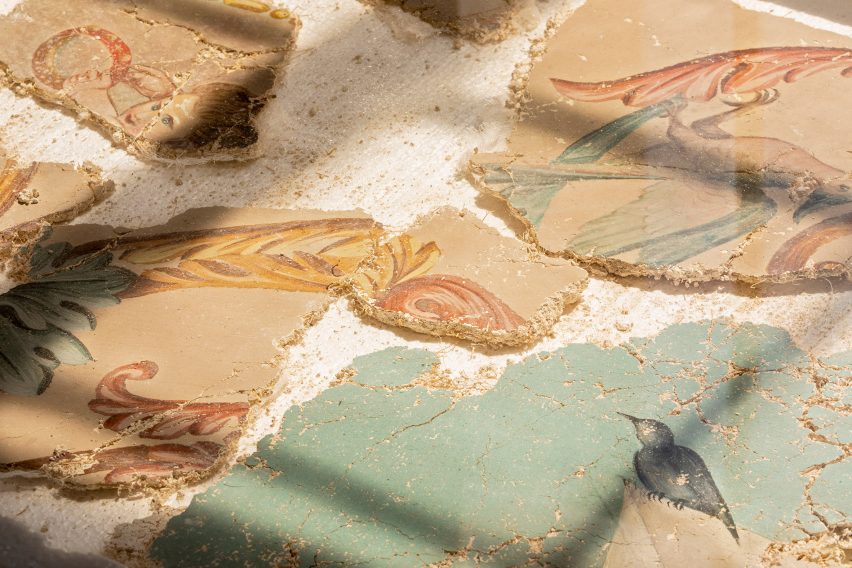
The marble columns that support the windows were finished in the UK, rather than being transported as whole objects that risked being broken in transit.
The reconstructed facade is supported by wooden beams. Karim Kassar explained: "It's not just for support – [wood] is normally used to support a facade like that, but it has also been designed to juxtapose traditional and modern structures."
"Wood is a beautiful way of supporting and structuring," she added. "In the main work of the [original] house, we used a lot of pieces along the beams and for support."
As well as the facade, the installation includes a large sofa with a mattress and cushions made from fabrics sourced from Beirut on which visitors can recline.
The seating is a reinterpretation of a liwan, the term for a space that often includes a similar seating salon in a traditional Lebanese house.
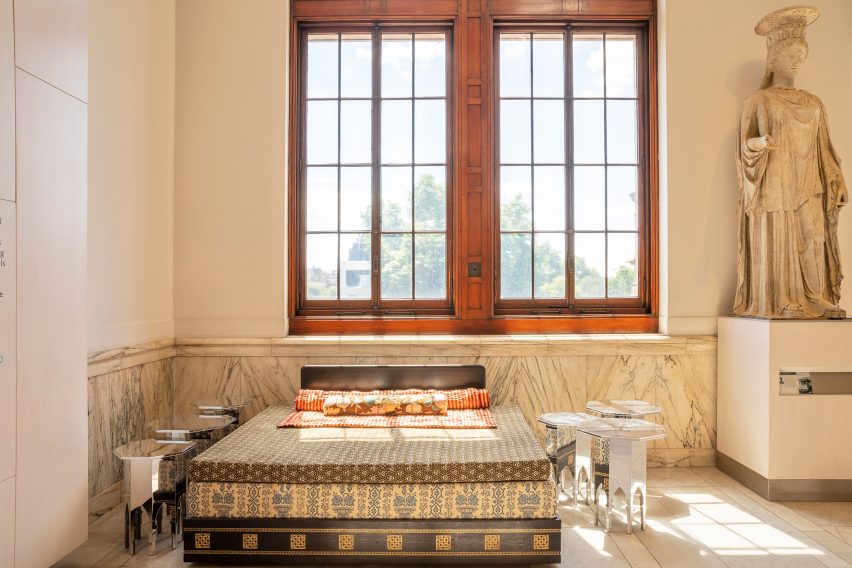
A case containing fragments of Bayt K's painted plaster ceiling that was destroyed in the explosion also features in the installation space.
As well as these elements, the architect incorporated three films into the project that play alongside the facade on a screen positioned opposite amphitheatre-like seating with traditional cushions.
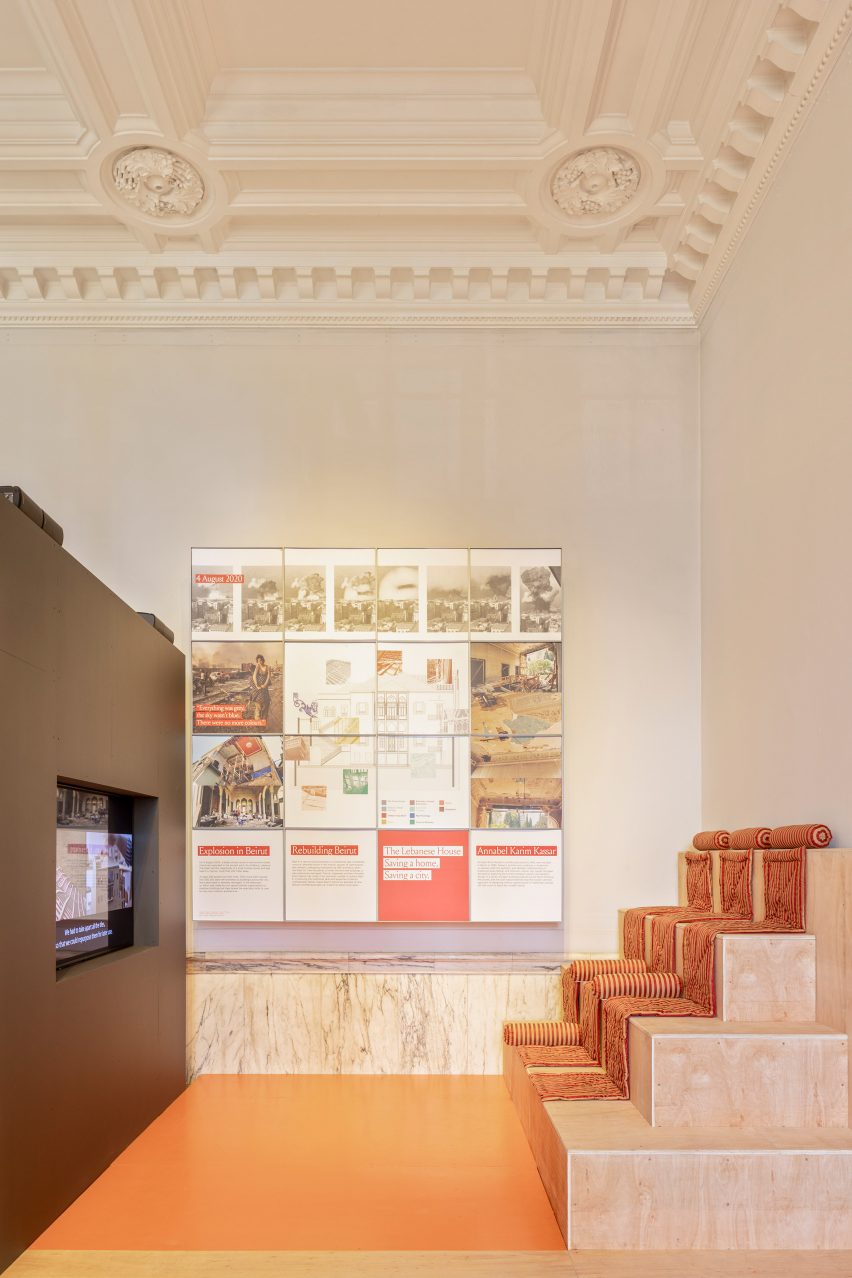
The films are directed by Wissam Charaf and Florence Strauss and document the history of Bayt K as well as the impact of the explosion on people across Beirut. Visitors can also explore a digital platform that offers more information on the architecture of the original house.
"It's very emotional," explained Karim Kassar of installing her work. "I realised how many of my emotions I brought that I was [previously] restraining myself not to feel. Now I realise it's a way to heal."
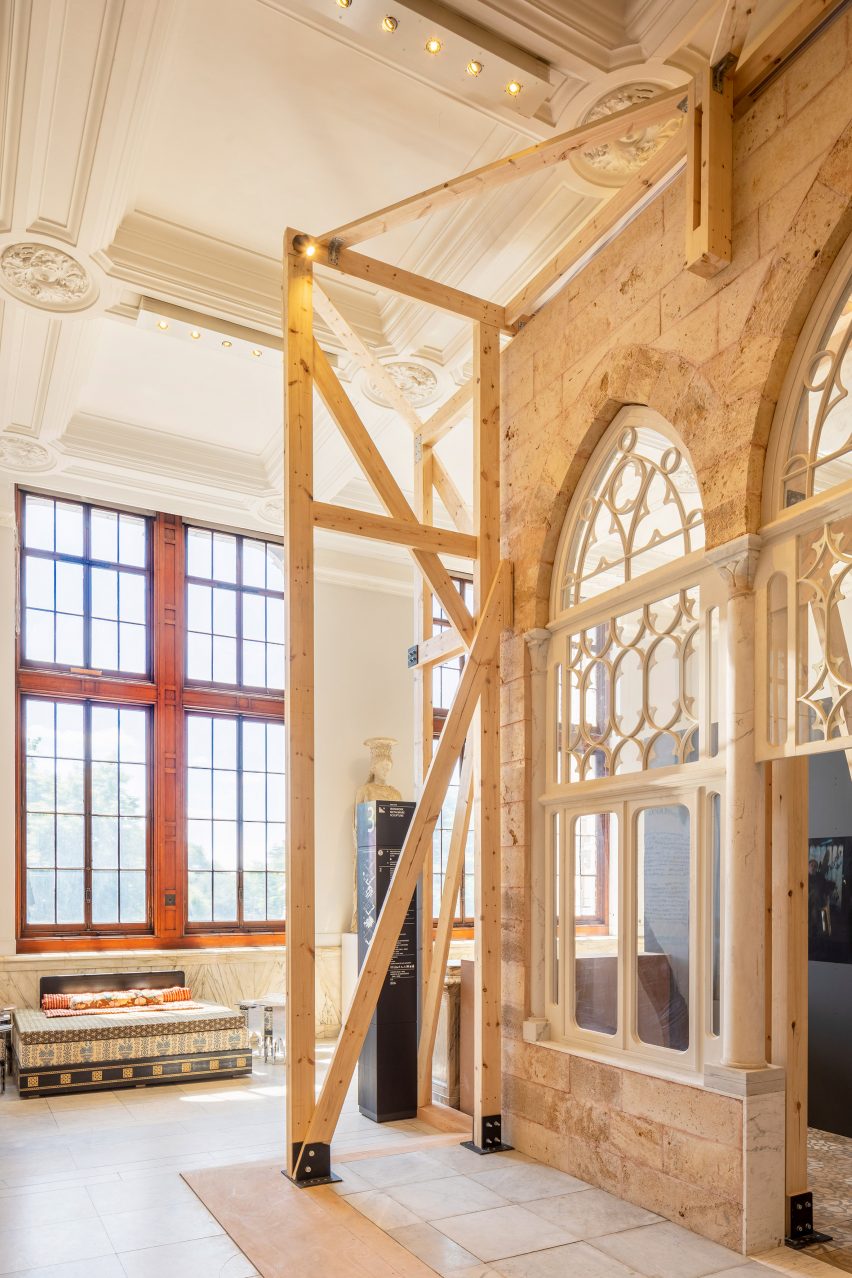
Before the explosion, AKK's original goal for Bayt K was to restore it to a liveable condition. Currently, the studio's main focus is to ensure that the house is structurally sound as its future as a home remains uncertain.
After the V&A reconstruction is disassembled and preserved, AKK hopes that it will go on to be exhibited at other locations.
Karim Kassar founded her studio in 1994. Previous similar projects by the architect include a pair of steel and wood telescopic pavilions that were constructed at a past edition of Milan design week, which also intended to recreate a liwan in a Milanese courtyard.
The photography is by Ed Reeve.
The Lebanese House: Saving a Home, Saving a City is on display at the V&A London from 13 June to 21 August 2022. See Dezeen Events Guide for an up-to-date list of architecture and design events taking place around the world.